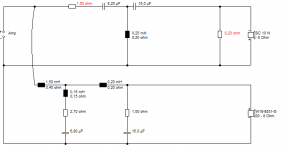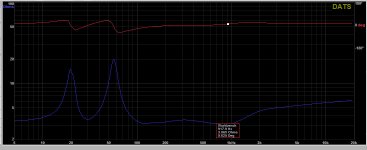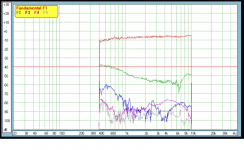Well I took the plunge into the rabbit hole and bought some measurement equipment. It will take a few weeks to get here and for me to get measurements to see if there is indeed anything wrong with a driver or something else going on that I can find with measurements. I am now very excited to do this and to try designing my own creations. My bank account might suffer, but we all need a hobby!
Thanks for your ideas everyone. I will bring this thread back up if I can come up with any conclusive results.
Thanks for your ideas everyone. I will bring this thread back up if I can come up with any conclusive results.
^Excellent! Measuring speakers is actually a quite easy and cheap hobby, but learning to analyze data per different measuring techniques and making corrections to present system is challenging! Happy journey!
My overpriced internet hasn't died yet. 😎
Actually, I just don't get why we should buy measuring equipment when we have reliable manufacturer measurements on a standard IEE baffle! Why reinvent the wheel? I just imported Zaph's ZMA frequency response and FRD impedance files. 😀
So far so good. What I have discovered is that my least favourite speaker in the Universe, aka 6" plus 1", works quite well in negative polarity. Clearly the Scanspeak 18W/8531 G00 is well constructed. Solid cast frame, damping rings an' all the rest of it.
If I was stuck with these drivers, I would build it as a two way. The 8.2R shunt is just a bit of impedance correction for my modelled SC 10 N Visaton tweeter. The actual 6600 scanspeak tweeter is near 3 ohms.
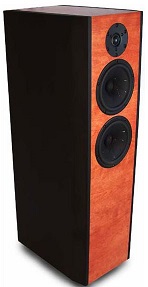
The two way works quite well. I have used real ZMA and FRD files. I like the power response. Only thing I don't like is the impedance bump at 1.4 kHz.
If it all got on my nerves, I'd consider some creative variation on the Ekta-Grande. But I'd try and get the impedance up and flatter.
Actually, I just don't get why we should buy measuring equipment when we have reliable manufacturer measurements on a standard IEE baffle! Why reinvent the wheel? I just imported Zaph's ZMA frequency response and FRD impedance files. 😀
So far so good. What I have discovered is that my least favourite speaker in the Universe, aka 6" plus 1", works quite well in negative polarity. Clearly the Scanspeak 18W/8531 G00 is well constructed. Solid cast frame, damping rings an' all the rest of it.
If I was stuck with these drivers, I would build it as a two way. The 8.2R shunt is just a bit of impedance correction for my modelled SC 10 N Visaton tweeter. The actual 6600 scanspeak tweeter is near 3 ohms.
The two way works quite well. I have used real ZMA and FRD files. I like the power response. Only thing I don't like is the impedance bump at 1.4 kHz.
If it all got on my nerves, I'd consider some creative variation on the Ekta-Grande. But I'd try and get the impedance up and flatter.
Attachments
Someone else's measurements aren't going to tell me what is wrong with my speakers. I can't even conscionably sell these drivers if there might be something wrong with one of them... I had a few options, I considered them, and decided on one.
What people will never admit, IMO, is that ALL loudspeakers are imperfect.
I've had a pretty happy time with these scanspeak MTM spekers:

Relieved of bass duties, hence lower distortion, they just do the business. I think that MTM is a very fine principle. What is not to like about 6dB higher level for the same distortion?
I honestly think that soft-domes are a terrible way to do things. The least-rigid dome in the repertoire. TBH, they have always made my ears bleed.
I've had a pretty happy time with these scanspeak MTM spekers:
Relieved of bass duties, hence lower distortion, they just do the business. I think that MTM is a very fine principle. What is not to like about 6dB higher level for the same distortion?
I honestly think that soft-domes are a terrible way to do things. The least-rigid dome in the repertoire. TBH, they have always made my ears bleed.
I honestly think that soft-domes are a terrible way to do things. The least-rigid dome in the repertoire. TBH, they have always made my ears bleed.
There must be people that like them because they keep being developed and used. Always some kind of tradeoff. I hope to have fun figuring out my own preferences.
I was thinking about this in bed and it did occur to me that Zaph's original design was posted way back in 2008. Now I know scans quality control is particularly good but it is feasible that there have been minor design changes over the years. A couple of dBs difference through the woofers breakup region is all it would take.
It's good that you are getting some measuring equipment because only that will tell you what's really going on here. Faulty drivers? A drift/change in driver frequency response Vs what zaph originally measured?
We don't really know.
It's good that you are getting some measuring equipment because only that will tell you what's really going on here. Faulty drivers? A drift/change in driver frequency response Vs what zaph originally measured?
We don't really know.
Initial measurements
Well here are my first measurements. Gated at 4ms before first reflections but I added what they call a blended response below 600hz which I understand allows a longer gate as required to get a measurement out of it.
The measurements were taken in the middle of the room at 2.83V, at tweeter height & 1 meter away. The FR graphs of left and right speaker are both on the same image.
The distortion plots show the 2nd harmonic and then a total of 2nd to 5th harmonics.
Well here are my first measurements. Gated at 4ms before first reflections but I added what they call a blended response below 600hz which I understand allows a longer gate as required to get a measurement out of it.
The measurements were taken in the middle of the room at 2.83V, at tweeter height & 1 meter away. The FR graphs of left and right speaker are both on the same image.
The distortion plots show the 2nd harmonic and then a total of 2nd to 5th harmonics.
Attachments
impedance measurement. Basically identical on the other speaker. Pretty wide area around 3 ohms. Maybe not ideal, but, my amp is supposed to be able to handle 4 ohm speakers and I can tell now that even just 2.8V is fairly loud so I don't need a lot of watts at my usual listening levels.
To my untrained eyes, I don't see any glaring problems in any of this. The response in the low frequencies needs to be taken with a grain of salt due to the way the measurement was taken. BTW the FR graph has 1/24 octave smoothing.
To my untrained eyes, I don't see any glaring problems in any of this. The response in the low frequencies needs to be taken with a grain of salt due to the way the measurement was taken. BTW the FR graph has 1/24 octave smoothing.
Attachments
That's pretty good for an in-room response, and from both speakers.
The crossovers appear to be working as they should, no major peaks or dips.
The slight peak around 600c/s seems typical and should not be audible,being narrow band.
So what's wrong with it ?
C.M
If you are concerned with the low impedance you could try a series resistor of an ohm or two wired in series with the speaker cable and see if that might help. It may affect the crossover, it may not. Worth a try.
The crossovers appear to be working as they should, no major peaks or dips.
The slight peak around 600c/s seems typical and should not be audible,being narrow band.
So what's wrong with it ?
C.M
If you are concerned with the low impedance you could try a series resistor of an ohm or two wired in series with the speaker cable and see if that might help. It may affect the crossover, it may not. Worth a try.
Last edited:
That's pretty good for an in-room response, and from both speakers.
The crossovers appear to be working as they should, no major peaks or dips.
The slight peak around 600c/s seems typical and should not be audible,being narrow band.
So what's wrong with it ?
C.M
If you are concerned with the low impedance you could try a series resistor of an ohm or two wired in series with the speaker cable and see if that might help. It may affect the crossover, it may not. Worth a try.
Well according to the measurements, it seems like not a whole lot as far as I can tell. That just leaves a mystery to me and not sure how I can proceed to make something that appeals to me a bit more.
They are just so harsh sounding. Now that I see measurements, there is no peak or distortion increase at 3.2khz region, yet when I EQ out a 4db cut or so, it does relieve some harshness to make the speakers so-so to my ears. Listening to really complex music (Especially metal music, OMG!) just gets somewhat jumbled and there's a real fatiguing and harsh sound to it.
I don't own anything better sounding as a reference except to say the install I had in my car was not harsh but it was an active 2-way +sub that I active XO'd by ear with relatively easy to work with mids and tweets. Also, I went to demo some home speakers last month, and none sounded all that harsh although many (but not all) were also dull compared to the ZRTs.
All I can suggest is that you taper off that very flat high frequency response with the tone control on the amplifier (if it has one), tone controls are generally centred around 1000c/s so doing that might prove effective.
Another alternative which may be useful but not attractive is to put a small piece of cotton wool in front of the tweeter to act as an acoustic filter, this can work but needs some experimentation. Not everything needs to be crossover based.
C.M
Another alternative which may be useful but not attractive is to put a small piece of cotton wool in front of the tweeter to act as an acoustic filter, this can work but needs some experimentation. Not everything needs to be crossover based.
C.M
All I can suggest is that you taper off that very flat high frequency response with the tone control on the amplifier (if it has one), tone controls are generally centred around 1000c/s so doing that might prove effective.
Another alternative which may be useful but not attractive is to put a small piece of cotton wool in front of the tweeter to act as an acoustic filter, this can work but needs some experimentation. Not everything needs to be crossover based.
C.M
I think now I am finding that I do need to cut tweeter level a little bit which is easy enough to do. I find this is more noticeable now that I got a few acoustic panels on the back wall and at the first reflection point on the side wall.
Not sure if I can cut enough with a resistor before the tweeter crossover or if I should do an L-pad after the XO to not affect the crossover region but I think the way this design was done, a simple resistor shouldn't hurt anything enough to be detrimental. Right now I have .7 ohms added before the tweeter XO but need a bit more attenuation and I don't have any resistors at the moment to try.
EDIT. Rethinking this last point... adding more resistance is starting to be significant compared to the total series impedance of the tweeter and the included 2.2 ohm resistor in the crossover.
Last edited:
I wonder if you are hearing the distortion in the 700-1000Hz range. Maybe coming from the tweeter which may not sound pleasant.
Attached is a test on the tweeter from Troel's site. The distortion rises below 1500 Hz or so and it may be that the 2nd order crossover is not enough for the low crossover point. Some are more sensitive than others; thinking of system7 especially 😀.
My ZRT2.0 has a bit of distortion (not measured; just listening) but you need to turn it up a fair amount. It is however a 3rd order crossover with quite a bit of padding.
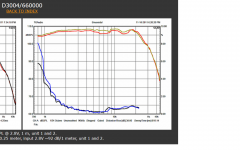
The link SS-domes
Attached is a test on the tweeter from Troel's site. The distortion rises below 1500 Hz or so and it may be that the 2nd order crossover is not enough for the low crossover point. Some are more sensitive than others; thinking of system7 especially 😀.
My ZRT2.0 has a bit of distortion (not measured; just listening) but you need to turn it up a fair amount. It is however a 3rd order crossover with quite a bit of padding.

The link SS-domes
Last edited:
Here is a test from Zaph's site. Shows rising 3rd order below 1000Hz; however distortion is actually pretty low in comparison to the other tweeters he tested😕.
View attachment 641004
It's a possibility. My higher order distortion measured higher than Zaphs across the board but that was through the crossover. Maybe I did something wrong in that measurement too. Just got the equipment today so I have to learn how to take accurate measurements and more about interpreting them.
I'm going to ask, since the measurements showed nothing- how is your room set up?
This could be the key,
Wolf
This could be the key,
Wolf
I was thinking about this in bed and it did occur to me that Zaph's original design was posted way back in 2008. Now I know scans quality control is particularly good but it is feasible that there have been minor design changes over the years. A couple of dBs difference through the woofers breakup region is all it would take.
And this is quite plausible, given how much mine were than spec. I purchased in 2015 from Madisound. However, this should make the peaks discussed far less prominent and easier to handle, not worse.
Best,
E
- Status
- Not open for further replies.
- Home
- Loudspeakers
- Multi-Way
- Zaph / Madisound ZRT 2.5 Problem
